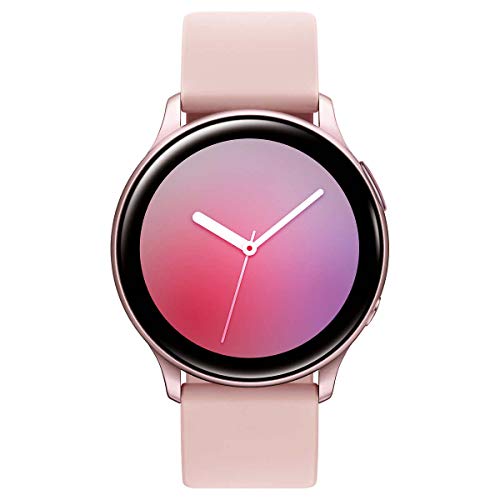Are you tired of carrying your bulky smartphone around while trying to navigate or track your fitness progress? We’ve all been there. Thankfully, there is a solution that might just revolutionize the way you go about these activities – GPS-enabled smartwatches. In this blog post, we will dive into the world of GPS-enabled smartwatches and compare them to smartphone apps, so you can make the best choice for your navigation and fitness tracking needs. Say goodbye to inconvenience and hello to convenience!
Find your perfect GPS-enabled smartwatch in our Bestsellers section
What are GPS-enabled smartwatches?
GPS-enabled smartwatches have revolutionized the way we track our location, navigate through unfamiliar territories, and monitor our fitness activities. These versatile devices combine the functions of traditional watches with the power of GPS technology, making them an invaluable tool for outdoor enthusiasts, athletes, and everyday users.
GPS Technology: Tracking Location with Precision
At the heart of GPS-enabled smartwatches lies Global Positioning System (GPS) technology. This technology uses a network of satellites orbiting the Earth to accurately determine the device’s location. This means that wherever you are, whether hiking in the mountains or running in a new city, your smartwatch can pinpoint your exact coordinates with impressive precision.
Key benefits of GPS tracking:
- Accurate and reliable location tracking even in challenging environments.
- Real-time information about distance covered, pace, and elevation.
- Assistance in tracking routes and exploring new areas with confidence.
Navigation Assistance at Your Wrist
Gone are the days of fumbling with maps or navigating through confusing smartphone apps. GPS-enabled smartwatches provide intuitive navigation features that guide you effortlessly to your destination.
Key navigation features include:
- Turn-by-turn directions with clear visual and audible prompts.
- On-screen maps showing your current location and directions.
- Points of interest (POI) recommendations, such as nearby restaurants or tourist attractions.
- Off-route notifications to keep you on track.
With a GPS-enabled smartwatch on your wrist, exploring new places becomes seamless and stress-free, allowing you to focus on enjoying your journey.
Fitness Tracking and Performance Analysis
Beyond navigation, GPS-enabled smartwatches offer a wide range of fitness-related features that help you monitor your physical activities and achieve your fitness goals.
Key fitness tracking features include:
- Step counting and distance tracking.
- Heart rate monitoring to optimize workout intensity.
- Calorie tracking to manage your energy expenditure.
- Activity summaries and progress tracking.
- Integration with fitness apps for a comprehensive overview of your workouts.
These features allow you to keep a close eye on your fitness progress, take control of your health, and stay motivated to achieve your desired level of physical activity.
Comparison Table: GPS-Enabled Smartwatches
The following comparison table highlights the key features and benefits of different GPS-enabled smartwatches:
| Watch Model | GPS Tracking Accuracy | Navigation Features | Fitness Tracking |
|---|---|---|---|
| Watch A | High | Turn-by-turn directions, on-screen maps | Step counting, heart rate monitoring, calorie tracking |
| Watch B | Very High | Turn-by-turn directions, POI recommendations | Step counting, heart rate monitoring, activity summaries |
| Watch C | Excellent | Turn-by-turn directions, off-route notifications | Step counting, distance tracking, integration with fitness apps |
Each watch offers unique advantages, so consider your specific needs and preferences when choosing the right GPS-enabled smartwatch for you.
Wrap-Up
GPS-enabled smartwatches have revolutionized the way we navigate and stay fit. Whether you’re an adventurer, a fitness enthusiast, or simply someone who wants peace of mind while exploring new places, these watches provide an all-in-one solution. With accurate location tracking, intuitive navigation assistance, and comprehensive fitness tracking features, they have become a must-have accessory for anyone seeking a seamless and dynamic lifestyle.
So why wait? Embrace the power of GPS-enabled smartwatches and let these remarkable devices guide you through every excursion and fitness journey!
Understanding smartphone apps for GPS navigation
In the digital age, GPS navigation has become an essential tool for finding our way around unfamiliar places. While standalone GPS devices and smartwatches with GPS capabilities have been popular choices, the rise of smartphone apps has brought about a new era of convenience and accessibility. In this blog section, we will delve into the capabilities of smartphone apps for GPS navigation, comparing them to GPS-enabled smartwatches, and exploring their advantages and limitations.
Smartphone Apps vs. GPS-Enabled Smartwatches
User Interface and Display
One of the key differences between smartphone apps and GPS-enabled smartwatches lies in their user interface and display:
- Smartphone Apps
- Feature intuitive and familiar touchscreen interfaces.
- Benefit from larger displays, providing a more detailed and comprehensive view of maps and directions.
- Offer a wider range of visual features, such as satellite imagery and street view.
- GPS-Enabled Smartwatches
- Provide a compact and wearable option for navigation.
- Often come with smaller screens, limiting the amount of information displayed at once.
- Tend to focus on providing essential navigation data, with less emphasis on visual features.
Connectivity and Accessibility
When it comes to connectivity and accessibility, smartphone apps have some distinct advantages over GPS-enabled smartwatches:
- Smartphone Apps
- Utilize cellular networks, allowing for real-time data updates and turn-by-turn directions.
- Can access a vast array of navigation apps available for download, catering to specific needs and preferences.
- Offer seamless integration with other smartphone features such as contacts, messaging, and media playback.
- GPS-Enabled Smartwatches
- Generally rely on Bluetooth connectivity with a smartphone for data updates and map information.
- Tend to have a limited selection of compatible navigation apps.
- Provide a standalone experience, freeing the user from the need to carry a smartphone while navigating.
Advantages of Smartphone Apps for GPS Navigation
Extensive Map Databases
Smartphone apps make use of extensive map databases, often provided by popular mapping services like Google Maps or Apple Maps. This ensures up-to-date information on roads, points of interest, and even real-time traffic conditions, enabling users to choose the most efficient routes.
Voice-Guided Turn-by-Turn Directions
Most smartphone apps offer voice-guided turn-by-turn directions, effectively eliminating the need to constantly look at the screen while driving or walking. This convenience enhances safety and allows for a more focused and stress-free navigation experience.
Real-Time Traffic and Alternative Routes
Thanks to their connectivity and access to real-time data, smartphone apps can provide accurate traffic information, allowing users to avoid congested areas and opt for alternative routes. This feature proves invaluable in saving time and reducing frustration on the road.
Integration with Other Apps and Services
Smartphone apps have the advantage of seamlessly integrating with other apps and services on your device. This means you can easily search for places of interest, share your location with friends, or even book a ride-sharing service directly from the navigation app itself.
Limitations of Smartphone Apps for GPS Navigation
Battery Life and Reliance on Internet Connectivity
Using smartphone apps for GPS navigation can be taxing on the device’s battery, especially during longer journeys. Additionally, most apps heavily rely on internet connectivity, which may not be reliable in remote areas or during network outages.
Limited Outdoor/Extreme Conditions Durability
While smartphones have become more rugged over the years, they still cannot match the durability and resilience of dedicated outdoor GPS devices. Extreme weather conditions, water exposure, or accidental drops may compromise their functionality.
Distractions and Safety Concerns
Though voice-guided directions help minimize distractions, using smartphone apps for navigation still poses some safety concerns. Glancing at the screen or interacting with the app while driving or walking could divert attention, leading to potential accidents or injuries.
Fitness tracking features
Smartwatches have become increasingly popular in recent years, offering a wide range of features that go beyond simply telling time. One area where these devices excel is in fitness tracking. GPS-enabled smartwatches, in particular, offer a host of features that can help individuals monitor and improve their overall health and well-being. In this blog section, we will delve into the various fitness tracking capabilities of these watches and explore how they integrate with fitness apps. Additionally, we will compare these features with those offered by smartphone apps, highlighting the advantages of using a GPS-enabled smartwatch for fitness tracking.
Heart Rate Monitoring
One of the primary fitness tracking features of a GPS-enabled smartwatch is its ability to monitor heart rate. By utilizing sensors on the underside of the device, these watches can measure your heart rate in real-time. This information is invaluable for understanding your cardiovascular health and can help you optimize your workouts for maximum benefit. Smartphone apps, on the other hand, typically rely on external heart rate monitors, which can be less accurate or cumbersome to use.
Key Points:
- GPS-enabled smartwatches have built-in heart rate sensors for real-time tracking.
- Smartphone apps often require external heart rate monitors.
GPS Tracking
As the name suggests, GPS-enabled smartwatches come equipped with built-in GPS technology. This allows for highly accurate tracking of outdoor activities such as running, cycling, or hiking. With GPS tracking, you can record the distance covered, pace, and even elevation changes. Smartphone apps can also leverage GPS functionality but require the user to carry their phone during the activity. The advantage of using a GPS-enabled smartwatch is that you can leave your phone behind and still track your activities effectively.
Key Points:
- GPS-enabled smartwatches offer accurate tracking of outdoor activities without the need for a phone.
- Smartphone apps require the user to carry their phone during activities.
Activity Monitoring and Goal Setting
In addition to specific exercise tracking, GPS-enabled smartwatches can monitor your daily activities and help you set achievable fitness goals. These watches can track your steps, calories burned, and even monitor your sleep patterns. By analyzing this data, you can gain insights into your overall activity level and make adjustments to your routine as needed. Smartphone apps may offer some activity monitoring features, but the constant wearability and constant tracking of a smartwatch offer a more comprehensive view of your daily habits.
Key Points:
- GPS-enabled smartwatches offer comprehensive activity tracking and goal setting.
- Smartphone apps may have limited activity monitoring capabilities.
Integration with Fitness Apps
Most GPS-enabled smartwatches seamlessly integrate with popular fitness apps, allowing you to sync your data and access additional features. This integration enables you to analyze your workouts in greater detail, participate in challenges with friends, and even receive tailored workout recommendations based on your goals and performance. Smartphone apps do offer extensive integrations as well, but the convenience of having all your fitness data on your wrist makes a GPS-enabled smartwatch a compelling choice.
Key Points:
- GPS-enabled smartwatches integrate with popular fitness apps for enhanced data analysis and additional features.
- Smartphone apps also offer integrations but lack the convenience of having data readily available on your wrist.
Factors to Consider When Choosing Between GPS-Enabled Smartwatches and Smartphone Apps
When it comes to tracking your fitness activities or navigating through unfamiliar territory, having access to accurate GPS data is a must. But with so many options available, it can be challenging to decide between a GPS-enabled smartwatch and a smartphone app. To help you make an informed decision, we have outlined some important factors to consider.
Battery Life
One of the key advantages of using a GPS-enabled smartwatch over a smartphone app is battery life. Smartphones are notorious for draining battery power quickly, especially when GPS is in use. On the other hand, smartwatches are specifically designed to conserve energy, ensuring a longer-lasting battery life. Some smartwatches can last for days or even weeks on a single charge, which is particularly beneficial for long outdoor activities or multi-day trips.
Comparative advantages:
- Smartwatches offer extended battery life, lasting for days or weeks.
- Smartphones drain battery power quickly when using GPS.
Convenience
Convenience is another important aspect to consider when deciding between a smartwatch and a smartphone app. While smartphones are undoubtedly versatile and offer a wide range of functionalities, they might not be the most convenient option for certain activities. Smartwatches, on the other hand, are designed to be worn on the wrist, providing easy access to GPS data and other features without the need to constantly reach for your phone.
Comparative advantages:
- Smartwatches offer on-the-go convenience.
- Smartphones may require constant handling and can be cumbersome during physical activities.
Accuracy
When it comes to GPS data, accuracy is crucial. In this aspect, both smartwatches and smartphones offer reliable accuracy, thanks to advancements in technology. However, it is worth noting that some high-end GPS-enabled smartwatches utilize multiple satellite systems, such as GPS, GLONASS, or Galileo, to provide even more precise positioning. Depending on the level of accuracy you require, this may be a significant factor to consider when choosing between the two options.
Comparative advantages:
- Both options provide accurate GPS data.
- High-end smartwatches may utilize multiple satellite systems to offer enhanced accuracy.
Additional Features
Apart from GPS navigation, both smartwatches and smartphones offer various additional features that can provide a seamless and enhanced user experience. However, the range and accessibility of these features can vary between the two options. Smartphones often come with a vast selection of apps for different purposes, such as weather updates, music streaming, or social media integration, allowing for a more customizable experience. On the other hand, smartwatches are designed to be fitness-focused and may offer features like heart rate monitoring, step tracking, or workout metrics, making them ideal for fitness enthusiasts.
Comparative advantages:
- Smartphones offer a wide range of customizable apps.
- Smartwatches specialize in fitness features and monitoring.
Summary
In summary, when choosing between a GPS-enabled smartwatch and a smartphone app, there are several factors to consider. Smartwatches excel in battery life and convenience, providing extended usage without the need to constantly handle your phone. They also offer a fitness-focused experience, with additional features tailored to those interested in tracking their physical activities. On the other hand, smartphones offer a wider variety of apps, allowing for a more customizable experience and integration with other aspects of your digital life. Ultimately, the decision will depend on your personal preferences and the specific requirements of your activities. Whatever your choice may be, both options offer accurate GPS data to enhance your outdoor adventures and daily fitness routine.
Which is the better option for tracking your fitness and location?
In conclusion, when comparing GPS-enabled smartwatches and smartphone apps, it is important to consider their unique benefits and drawbacks. By taking into account personal preferences and specific requirements, individuals can make a well-informed choice.















